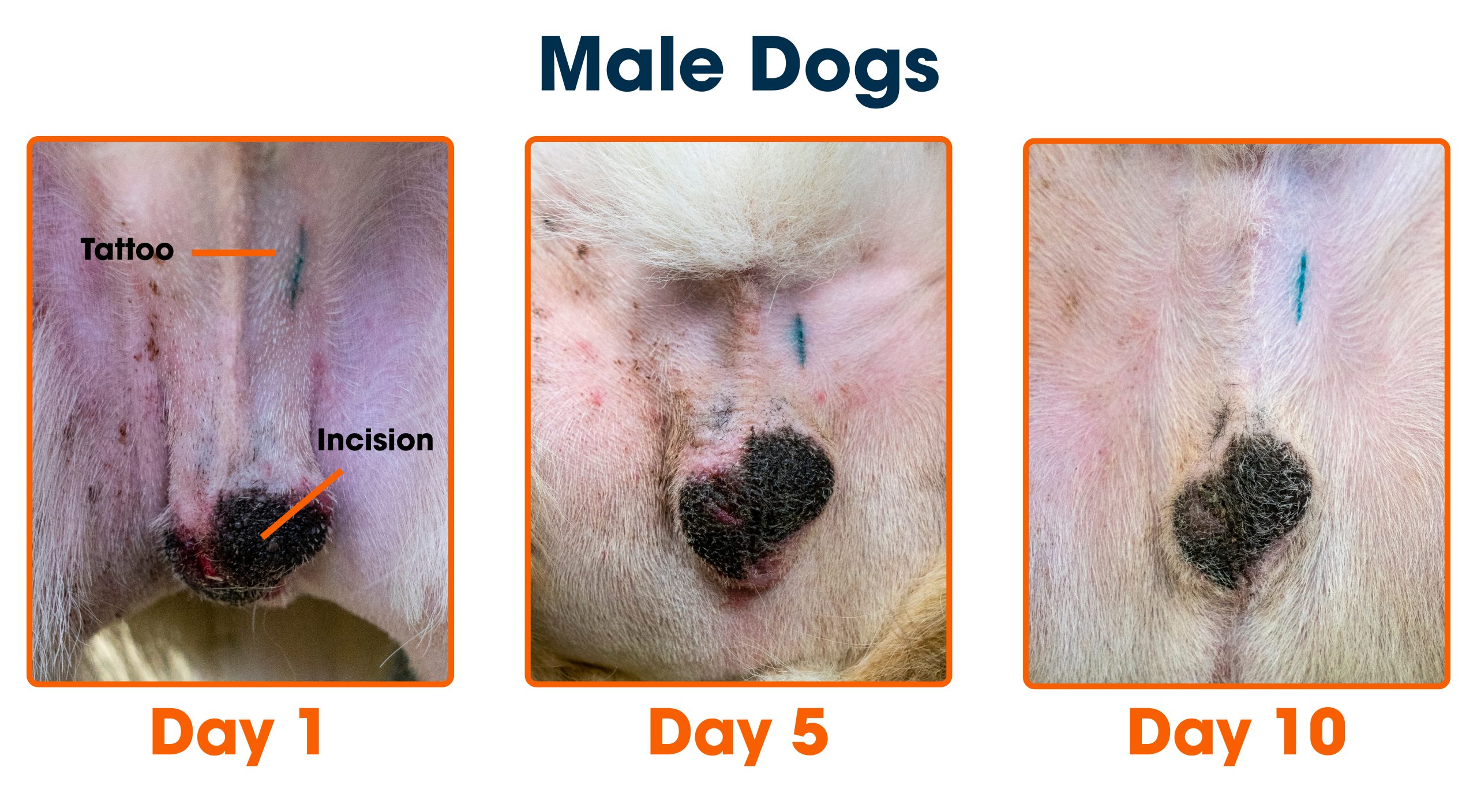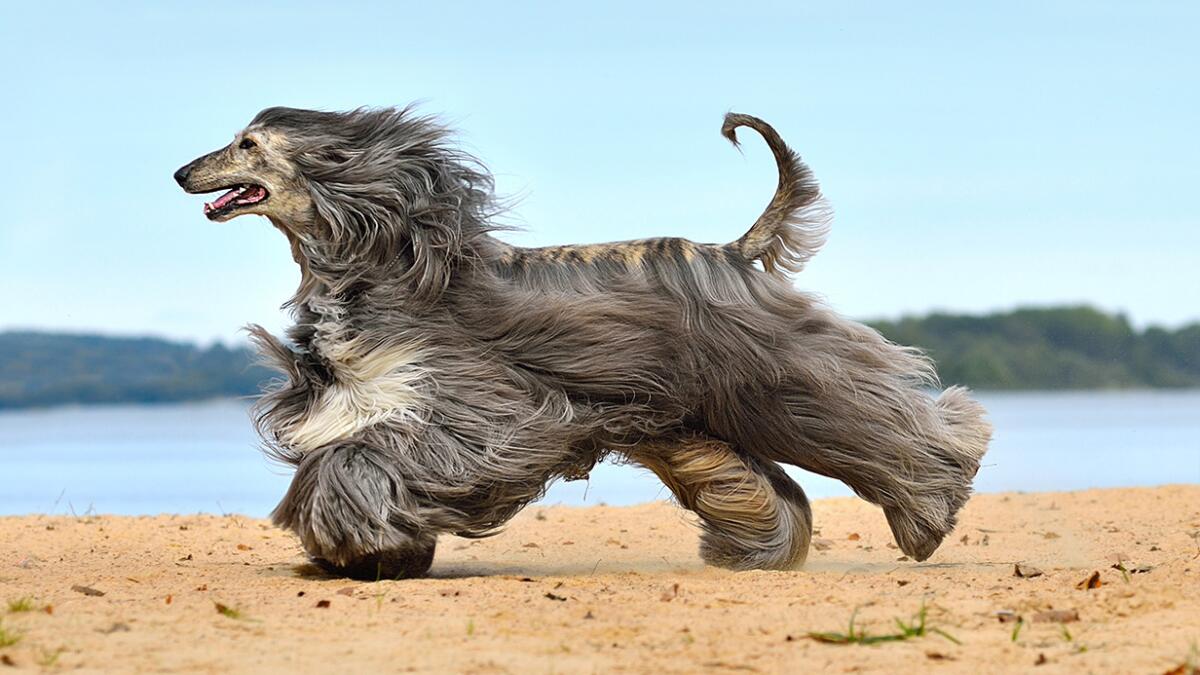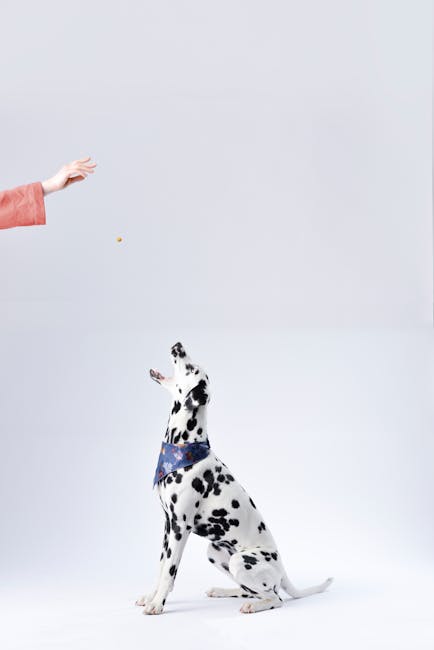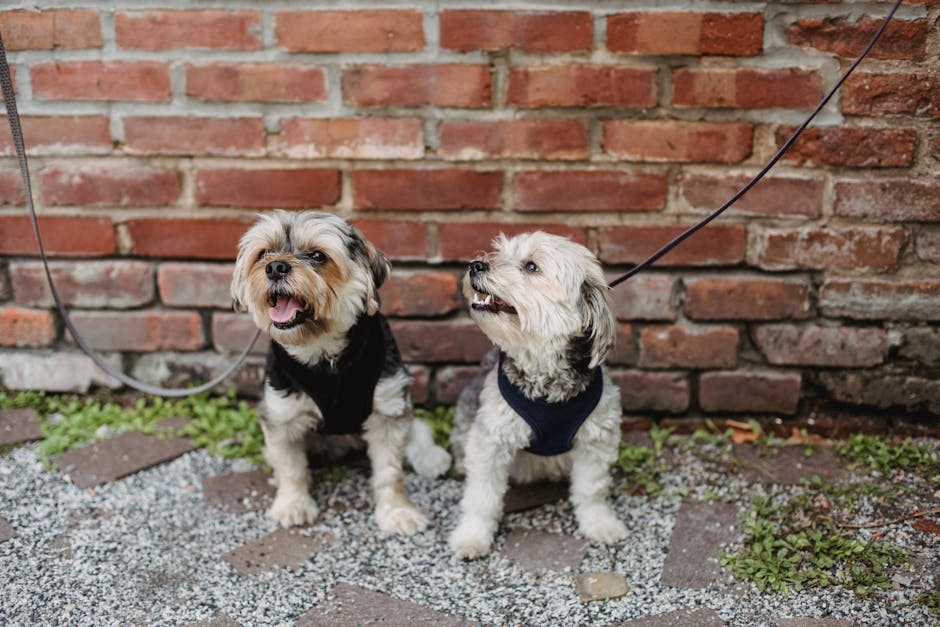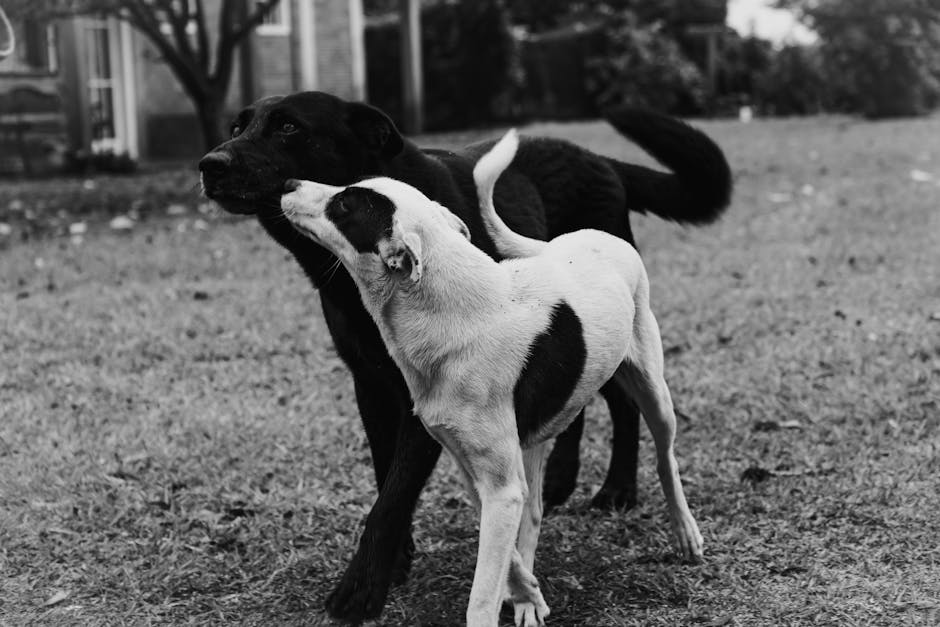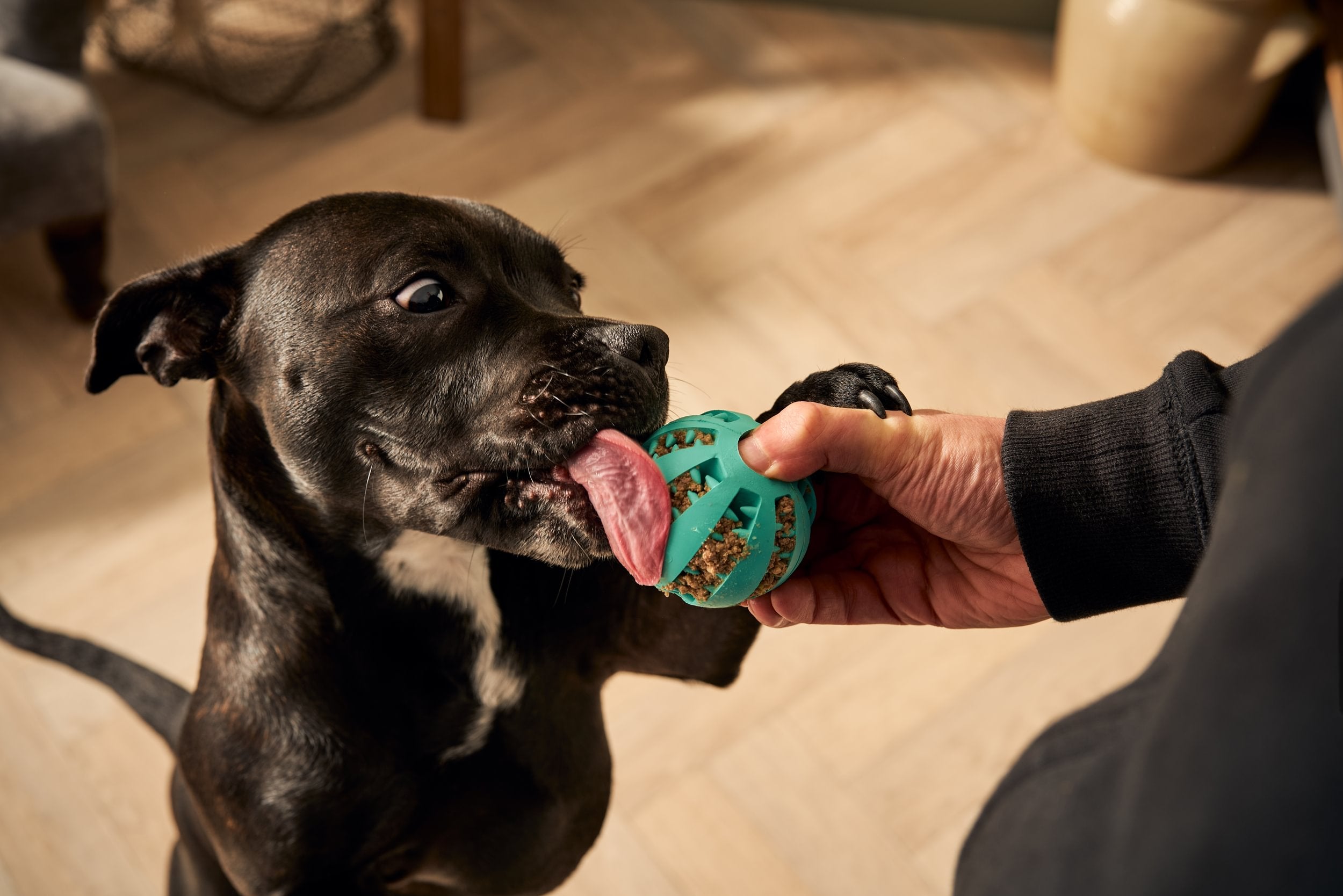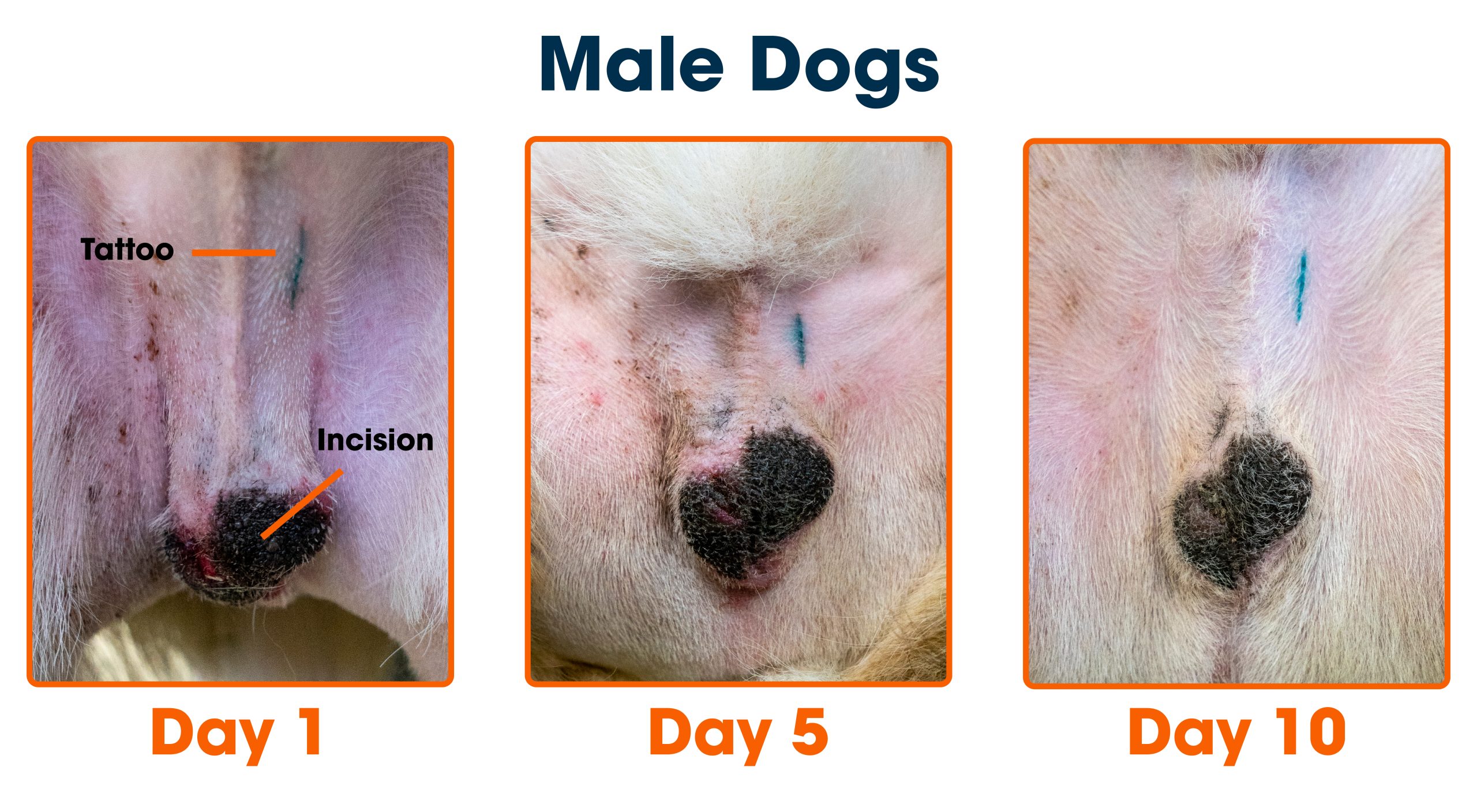If your dog is about to be neutered, you’re probably wondering, “How long will the recovery take?” Knowing what to expect can help you prepare and make sure your furry friend heals comfortably. The good news is that with the right care, your dog can bounce back quickly.
But there are a few important things you need to watch for during this time. Keep reading to discover exactly how long your dog’s recovery will take and what you can do to support them every step of the way.

Credit: www.tunet.cult.cu
Typical Recovery Timeline
Understanding the typical recovery timeline after your dog’s neuter surgery helps you provide the best care. Each phase has its own challenges and milestones. Knowing what to expect can ease your worries and improve your dog’s comfort during healing.
First 24 Hours
The initial day after surgery is critical. Your dog may feel groggy or disoriented due to anesthesia. It’s normal for them to rest a lot and show little interest in food or water.
During this time, keep your dog in a quiet, comfortable place. Limit movement to prevent strain on the incision. Watch for any signs of severe pain or bleeding, and contact your vet if you notice anything unusual.
Days 2 To 7
In this period, your dog should gradually become more alert and active. You might see some swelling or mild redness around the incision site. This is typical but keep an eye out for excessive swelling, discharge, or foul odor.
Restrict your dog’s activity to short leash walks and no jumping or running. Using an Elizabethan collar can prevent them from licking or biting the wound. Have you noticed how some dogs seem to understand when they need to slow down?
Weeks 2 To 4
By the second week, the incision usually starts to heal well. Stitches or staples, if used, might be removed around this time. Your dog’s energy should return, but avoid rough play or swimming until fully cleared by your vet.
At this stage, check the incision daily. Scar tissue may form, but the skin should close without gaps. If your dog shows any unusual behavior like excessive licking or signs of discomfort, don’t hesitate to reach out to your vet.
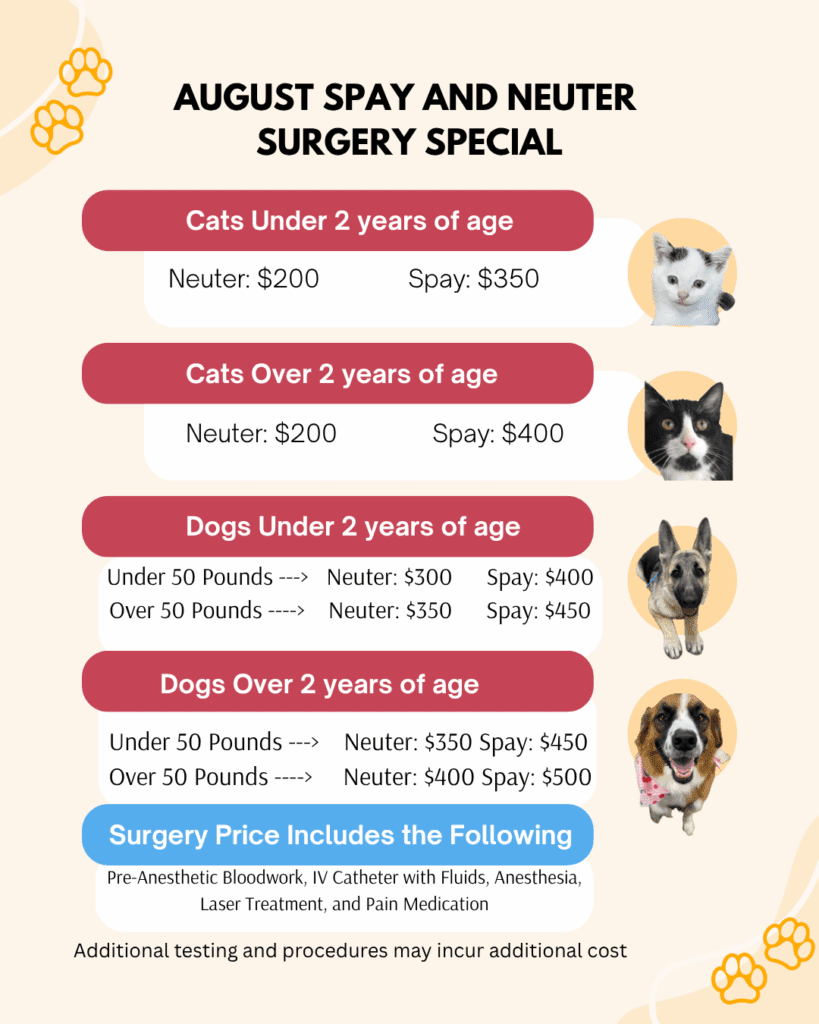
Credit: www.stringtownanimalhospital.com
Factors Affecting Recovery
Recovery time after your dog’s neuter surgery can vary widely. Several factors play a role in how quickly your furry friend bounces back. Understanding these factors helps you set realistic expectations and provide the best care during recovery.
Age And Breed
Young dogs usually heal faster than older ones because their bodies regenerate quickly. However, some breeds naturally recover at different rates. For example, smaller breeds often heal faster than larger breeds due to less tissue trauma.
If your dog is a senior or belongs to a breed prone to slower healing, you might notice a longer recovery period. Have you observed differences in healing times between your pets? This could be due to their age or breed-specific traits.
Health Conditions
Underlying health issues can slow down recovery. Dogs with conditions like diabetes, obesity, or immune disorders may take more time to heal. These illnesses can weaken the body’s ability to fight infection and repair tissues.
It’s crucial to inform your vet about any health problems before surgery. This knowledge allows for tailored post-op care that supports your dog’s unique needs. Are you aware of any health factors that might affect your dog’s healing process?
Surgery Technique
The method your vet uses for neutering impacts recovery length. Minimally invasive techniques, like keyhole surgery, often result in less pain and quicker healing. Traditional open surgery might require more recovery time due to larger incisions.
Ask your vet about the procedure planned for your dog. Understanding the technique helps you anticipate aftercare requirements and signs to watch for. Could a less invasive surgery option be available for your dog?
Signs Of Normal Healing
Understanding the signs of normal healing after your dog’s neuter surgery helps you know what to expect and when to seek help. Healing doesn’t happen overnight, but there are clear signals that your pup is on the right track. Paying attention to these signs can ease your worries and keep your dog comfortable throughout recovery.
Wound Appearance
The surgical site should look clean and gradually improve each day. Initially, you might see some redness and slight swelling, which is normal in the first 48 hours.
Keep an eye out for:
- Minimal scabbing or a thin layer of dried blood
- Skin that looks pink but not bright red
- No thick discharge or foul odor
If the wound starts to ooze pus, becomes very swollen, or the redness spreads, it’s a sign to contact your vet immediately.
Behavior Changes
Your dog might seem a bit quieter or less playful right after surgery, which is normal. They may also want more rest than usual and seem less interested in food for a day or two.
Watch for signs like:
- Gradual return to normal eating habits
- Relaxed, calm demeanor without signs of pain such as whining or excessive licking
- Sleeping more but waking easily and responding to you
Sudden lethargy or aggressive behavior can indicate discomfort or complications, so don’t ignore these changes.
Activity Levels
Limiting your dog’s activity is crucial to avoid stress on the healing site. You’ll notice your dog naturally moving less and resting more during the first week.
Normal activity signs include:
- Short, slow walks that gradually increase in length
- Reluctance to jump or run but a willingness to move around comfortably
- Calm behavior without excessive excitement
Ask yourself if your dog seems comfortable during these activities or if they pause often or seem stiff. Adjust their activity accordingly to support healing.
Common Complications
Understanding the common complications after your dog’s neuter surgery can help you spot problems early and act quickly. While most dogs heal smoothly, some face issues that need attention to avoid longer recovery times or serious health risks. Keeping a close eye on your dog and knowing what to watch for makes all the difference in a safe recovery.
Infection Symptoms
Infections after neuter surgery can cause redness, warmth, and pus around the incision site. If your dog starts licking the area excessively or shows signs of pain, it might indicate infection.
Watch for fever, lethargy, or loss of appetite as well. These signs mean it’s time to contact your vet immediately to prevent the infection from worsening.
Swelling And Bruising
Some swelling and bruising are normal but should gradually improve within a few days. If swelling becomes hard, hot, or painful, it could signal a problem like a hematoma or infection.
Keep your dog calm and restrict activity to reduce swelling. If you notice swelling increasing or lasting more than a week, check with your vet to avoid complications.
Excessive Bleeding
Minor bleeding right after surgery is common, but continuous or heavy bleeding is a red flag. Blood soaking through the bandage or pooling around the incision needs urgent veterinary attention.
Bleeding can be caused by movement, an injury, or a clotting disorder. If your dog is bleeding excessively, try to keep them still and seek professional help immediately to prevent shock or other serious issues.
Post-surgery Care Tips
After your dog’s neuter surgery, proper care is crucial to help them heal quickly and comfortably. Knowing how to manage pain, prevent licking, and control their activity can make a big difference. Let’s look at key tips you can use right away to support your furry friend’s recovery.
Managing Pain
Your vet will likely prescribe pain medication to keep your dog comfortable. Make sure you follow the dosage instructions exactly—never skip doses or give extra. Watch for signs of pain like whining, restlessness, or licking the surgery site, and contact your vet if you notice anything unusual.
Sometimes, natural calming techniques help too. Gentle petting and a quiet environment can reduce stress and ease discomfort. Have you noticed how your dog responds to soft music or a calm voice? These small efforts can support their healing process.
Preventing Licking And Biting
Dogs often want to lick or bite their wounds, but this can cause infections or reopen the incision. Using an Elizabethan collar (cone) or a recovery suit can prevent this behavior effectively. If your dog hates the cone, try a softer alternative like an inflatable collar.
Distract your dog with toys or gentle play to keep their mind off the surgery site. Have you tried introducing new chew toys or puzzle feeders? These can serve as helpful distractions and reduce the urge to lick.
Exercise Restrictions
Limiting your dog’s movement is vital to avoid stress on the healing area. Avoid running, jumping, or rough play for at least 10 to 14 days after surgery. Short leash walks for bathroom breaks are usually fine, but keep them slow and calm.
Setting up a cozy recovery space where your dog can rest undisturbed helps a lot. Think about how you can rearrange your home to give them this safe zone. Have you considered using baby gates or crates to manage their activity levels during recovery?
When To Contact The Vet
Knowing when to contact the vet during your dog’s recovery from neutering is crucial. It ensures your pet heals safely and avoids complications. Watch your dog closely and act quickly if anything seems wrong. Early intervention can prevent serious problems.
Emergency Signs
- Heavy bleeding or swelling around the surgery site
- Severe pain or constant whining
- Foul smell or pus from the incision
- Difficulty breathing or sudden weakness
- Vomiting or refusal to eat for more than 24 hours
- High fever or shivering
These signs require immediate veterinary attention. Do not wait or try home remedies.
Follow-up Appointments
Schedule the follow-up visit as advised by your vet. These appointments check healing progress and remove stitches if needed. Bring up any concerns or unusual behavior during these visits. Regular check-ups help catch problems early.
Medication Guidance
Give all prescribed medicines exactly as directed. Do not stop medication early, even if your dog seems fine. Contact the vet if side effects like vomiting, diarrhea, or loss of appetite occur. Proper medication supports quick and safe recovery.

Credit: www.facebook.com
Frequently Asked Questions
How Long Does Dog Recovery Take After Neutering?
Dog recovery after neutering typically takes 10 to 14 days. Most dogs heal quickly with proper care. Avoid strenuous activities during this period to ensure smooth healing and prevent complications.
When Can Dogs Resume Normal Activity Post-neutering?
Dogs can usually resume normal activity 10 to 14 days after neutering. Gentle walks are fine after a few days. Avoid running, jumping, or rough play until fully healed to prevent injury.
What Signs Indicate Slow Recovery After Neutering?
Signs of slow recovery include swelling, redness, discharge, or lethargy. If your dog shows these symptoms, consult your vet immediately. Proper wound care and rest are essential for a healthy recovery.
How To Care For A Dog After Neuter Surgery?
Keep the incision clean and dry, and prevent licking. Use an Elizabethan collar if needed. Provide a quiet, comfortable space and restrict activity for 10-14 days to support healing.
Conclusion
Dog recovery from neuter usually takes about 10 to 14 days. During this time, rest is very important. Keep your dog calm and limit active play. Watch the surgery area for any signs of infection. Follow your vet’s instructions carefully to help healing.
Most dogs return to normal quickly and feel better soon. Patience and care make a big difference in recovery. Your dog will be healthy and happy after proper rest. Stay attentive and give gentle support every day. Recovery is simple with the right care and love.

